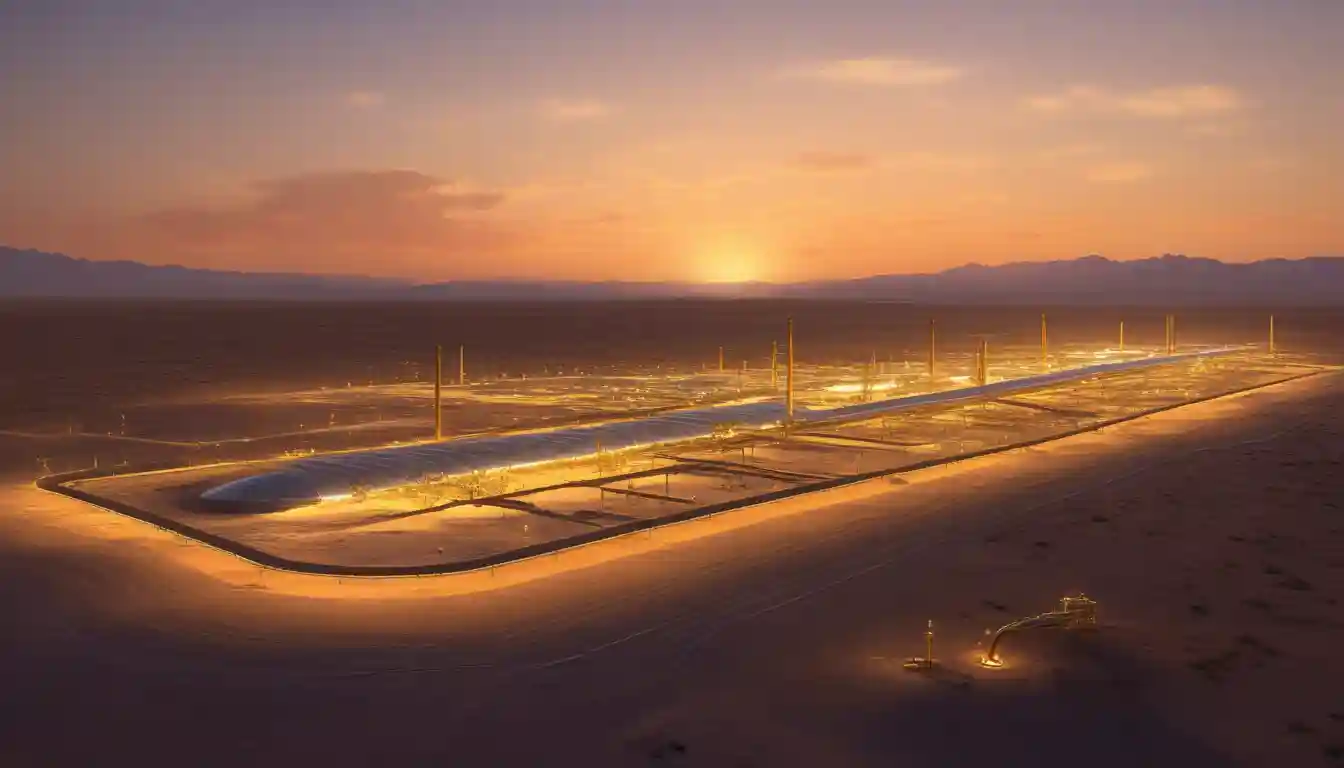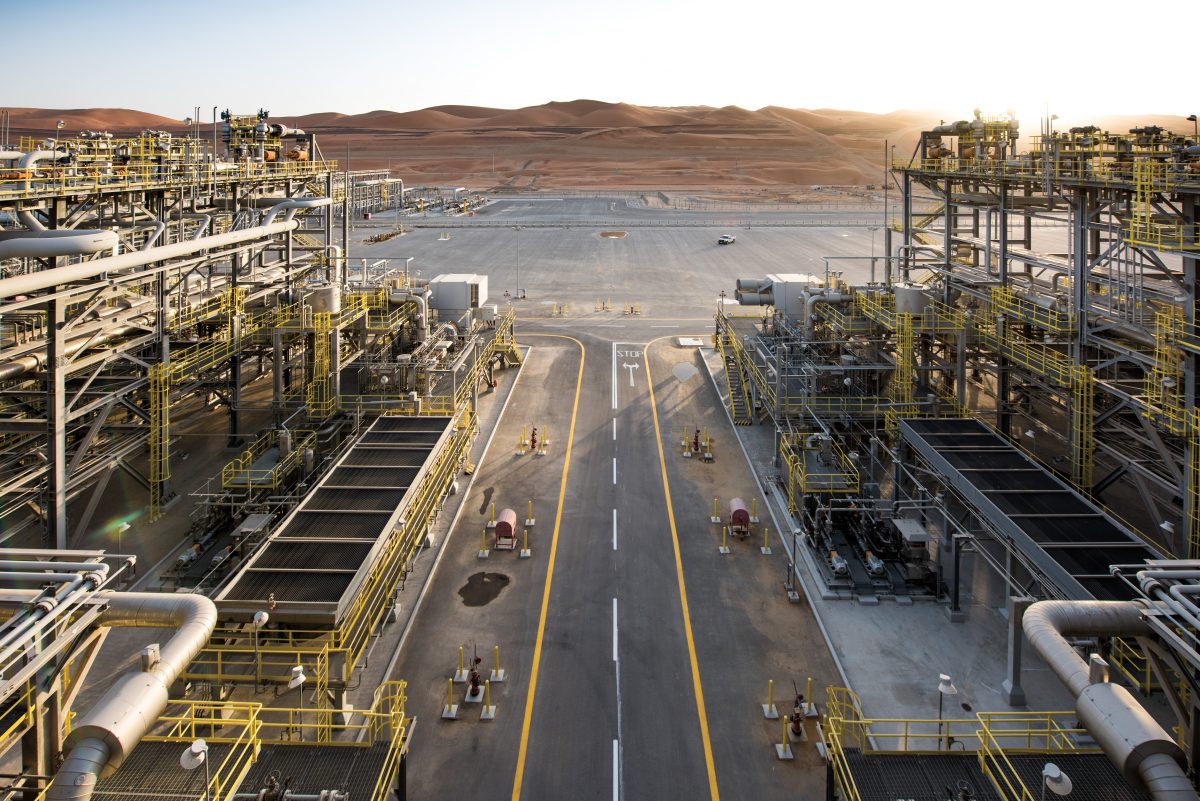
Saudi Aramco Raises $11 Billion from BlackRock-Led Investors in Major Gas Infrastructure Deal
Saudi Arabia's $11 Billion Gas Gambit Reshapes Global Energy Infrastructure
How Aramco's Jafurah Deal Signals a New Era of Strategic Capital Deployment in the Gulf
DHAHRAN, Saudi Arabia — Aramco's announcement of an $11 billion lease-and-leaseback transaction with a consortium led by Global Infrastructure Partners represents the largest foreign direct investment commitment to Saudi midstream infrastructure, underscoring the Kingdom's systematic approach to monetizing energy assets while retaining operational control.

The 20-year arrangement, disclosed Wednesday, centers on the Jafurah field—Saudi Arabia's largest non-associated gas development containing an estimated 229 trillion standard cubic feet of raw gas and 75 billion stock tank barrels of condensate. The transaction establishes Jafurah Midstream Gas Company as a joint venture with Aramco holding 51% ownership and the investor consortium controlling the remaining 49%.
Global Infrastructure Partners, now part of BlackRock following their recent acquisition, leads a group of international institutional investors including major participants from Asia and the Middle East. The deal builds upon BlackRock's existing relationship with Aramco, having co-led a consortium investment in Aramco Gas Pipelines Company in 2022.
Under the transaction structure, JMGC will lease development and usage rights for both the Jafurah Field Gas Plant and the Riyas NGL Fractionation Facility, then lease them back to Aramco for the full 20-year term. Aramco will pay tariffs to JMGC in exchange for exclusive rights to receive, process, and treat raw gas from Jafurah, with no restrictions imposed on the company's production volumes.
A lease-and-leaseback is a financial transaction where a company sells an asset and then immediately leases it back from the new owner. This asset monetization strategy allows the original owner to receive a significant cash infusion while retaining the operational use of the asset.
The Architecture of Transformation
The deal's structure reveals sophisticated financial engineering designed to optimize capital allocation across Aramco's expanding portfolio. Through the newly-formed Jafurah Midstream Gas Company, international investors—led by funds managed by Global Infrastructure Partners, now part of BlackRock—will hold a 49% stake alongside institutional co-investors from Asia and the Middle East. Aramco retains majority control with 51% ownership while securing $11 billion in upfront proceeds.
The Jafurah midstream gas deal structure, showing the flow of assets and capital between Aramco, the joint venture, and investors.
| Entity | Role & Action | Assets / Capital Contribution | Flow of Capital & Assets |
|---|---|---|---|
| Aramco | Sells a stake in midstream assets and operates them under a leaseback agreement. | Retains 51% majority stake in the joint venture and operational control of the assets. | Receives an $11 billion capital injection from investors. Pays the joint venture a tariff for the use of the assets. |
| Investors (Consortium led by BlackRock's GIP) | Provide capital in exchange for a minority stake in the joint venture. | Invest $11 billion to acquire a 49% stake in the Jafurah Midstream Gas Company (JMGC). | Provide upfront capital to Aramco and in return receive stable cash flows from the tariffs paid by Aramco. |
| Joint Venture (Jafurah Midstream Gas Company - JMGC) | A newly formed subsidiary that owns and leases the midstream assets. | Holds the lease and usage rights for the Jafurah Field Gas Plant and the Riyas NGL Fractionation Facility. | Leases the assets back to Aramco for a 20-year period and receives regular tariff payments in exchange. |
Under the 20-year arrangement, JMGC will lease development and usage rights for both the Jafurah Field Gas Plant and the Riyas NGL Fractionation Facility, then lease them back to Aramco. The state oil company will pay tariffs to JMGC in exchange for exclusive rights to receive, process, and treat raw gas from the field—a structure that transforms volatile commodity exposure into predictable infrastructure returns.
"Jafurah represents a cornerstone of our ambitious gas expansion program," Aramco President and CEO Amin H. Nasser stated. "This foreign direct investment demonstrates the attractive value proposition of our unconventional gas operations and highlights the appeal of Aramco's long-term strategy to the international investment community."
The timing proves strategic. As Jafurah prepares to commence phase-one production later this year, the Kingdom accelerates development of subsequent phases within its broader initiative to increase gas production capacity by 60% between 2021 and 2030.
Beyond Financial Engineering: Strategic Imperatives
This transaction emerges from converging pressures reshaping global energy markets. Saudi Arabia's Vision 2030 economic diversification program demands substantial capital deployment across multiple sectors simultaneously—from renewable energy and hydrogen production to artificial intelligence infrastructure and advanced manufacturing. The Kingdom's strategy involves displacing crude oil from domestic power generation with natural gas, thereby freeing additional petroleum exports while building industrial feedstock capacity.
Saudi Arabia's planned natural gas production increase as part of its goal to shift the domestic energy mix by 2030.
| Metric | Current Status/Baseline | 2030 Target | Key Driver/Initiative |
|---|---|---|---|
| Domestic Electricity Generation Mix | Approximately 60% natural gas and 40% oil. | Around 50% natural gas and 50% renewable energy. | Saudi Vision 2030 and the Saudi Green Initiative. |
| Natural Gas Production | 13.5 billion cubic feet per day. | Increase by over 60% to approximately 21.3 billion cubic feet per day. | Development of the Jafurah shale gas field. |
| Crude Oil Displacement in Power Sector | Significant reliance on liquid fuels for power generation. | Displace up to 350,000 barrels per day of crude oil. | Replacing liquid fuels with natural gas and renewables. |
"We are pleased to deepen our partnership with Aramco with our investment in Saudi Arabia's natural gas infrastructure, a key pillar of global natural gas markets," noted Bayo Ogunlesi, Chairman and CEO of GIP. The investment builds upon BlackRock and GIP's existing relationship with Aramco, including their 2022 participation in a consortium investing in Aramco Gas Pipelines Company.
The Jafurah development addresses multiple strategic objectives within Saudi economic planning. As a feedstock provider to the petrochemicals sector, the field will supply energy requirements for emerging growth sectors, including AI data centers that demand enormous power consumption. This convergence of traditional hydrocarbon infrastructure with cutting-edge technology reflects the Kingdom's nuanced approach to energy transition.
Non-associated gas is natural gas found in reservoirs that do not contain significant amounts of crude oil, distinguishing it from associated gas which is produced with oil. This gas is often found in unconventional resources, such as the vast reserves of shale gas in fields like Jafurah.
Market Dynamics and Global Implications
The transaction unfolds against shifting global gas market fundamentals. Asian power demand continues growing faster than renewable capacity deployment, while European markets seek supply diversification following geopolitical disruptions. Saudi Arabia, historically a minor gas exporter, positions itself to capture expanding market opportunities through strategic infrastructure investments.
For international investors, Saudi midstream assets offer compelling risk-adjusted returns. The Kingdom's sovereign credit profile, combined with Aramco's operational track record, provides institutional capital access to inflation-protected cash flows from hard assets. Infrastructure funds and pension plans increasingly prize long-duration investments backed by stable counterparties amid global monetary tightening.
Industry analysts suggest this transaction reflects broader trends in energy infrastructure monetization. Major oil companies worldwide are selectively divesting midstream assets to unlock capital for upstream exploration and energy transition investments. The Saudi approach—maintaining operational control while accessing international capital—offers a template for other national oil companies seeking similar capital optimization.
Investment Landscape and Forward Projections
Market dynamics suggest several investment themes emerging from this transaction structure. Infrastructure equity markets may see increased appetite for similar Gulf energy assets, particularly those offering contracted cash flows with sovereign-backed counterparties. The successful completion of this deal could catalyze additional Saudi infrastructure monetizations across hydrogen, ammonia, and carbon capture transport networks.

Analysts suggest monitoring several key indicators for future investment opportunities. Saudi Arabia's continued gas infrastructure expansion could generate additional midstream investment prospects within the next five-year period. The Kingdom's hydrogen and blue ammonia development programs may employ similar lease-leaseback structures as projects advance toward commercial deployment.
Regional gas market development could accelerate if Jafurah reaches projected production capacity. The field's output may support Saudi Arabia's emergence as a meaningful LNG exporter before 2030, potentially altering regional pricing dynamics and supply chain relationships. Energy-intensive industries, including aluminum production, steel manufacturing, and green hydrogen development, could cluster near Jafurah output sources.
Investment advisors recommend careful evaluation of regional infrastructure opportunities while acknowledging inherent geopolitical risks. Past performance of similar transactions, including previous Aramco pipeline monetizations, suggests these structures can deliver steady returns for patient institutional capital. However, investors should consult qualified financial advisors and conduct thorough due diligence regarding regulatory frameworks, counterparty risk, and broader economic factors affecting long-term performance.
Transformation's Broader Canvas
The Jafurah transaction represents more than financial restructuring—it embodies Saudi Arabia's measured approach to economic modernization. By selectively opening strategic assets to international capital while preserving operational sovereignty, the Kingdom demonstrates how resource-rich nations can access global capital markets without compromising national control.

As production ramps through the remainder of this decade, Jafurah's success will influence additional infrastructure investments across the Gulf. The convergence of traditional energy infrastructure with emerging technologies like artificial intelligence and renewable energy creates unprecedented capital requirements that may necessitate innovative financing approaches.
This $11 billion commitment signals international investors' confidence in Saudi Arabia's long-term economic trajectory while providing the Kingdom essential capital for continued diversification. The transaction's completion, expected subject to customary closing conditions, could establish precedents for energy infrastructure investment across the broader Middle East region.
The pre-dawn quiet at Jafurah will soon give way to the complex orchestration of gas processing that powers economic transformation. What begins as unconventional gas extraction may ultimately fuel the Kingdom's transition toward a diversified, technology-enabled economy—financed through the calculated deployment of international capital within carefully structured sovereign frameworks.
NOT INVESTMENT ADVICE